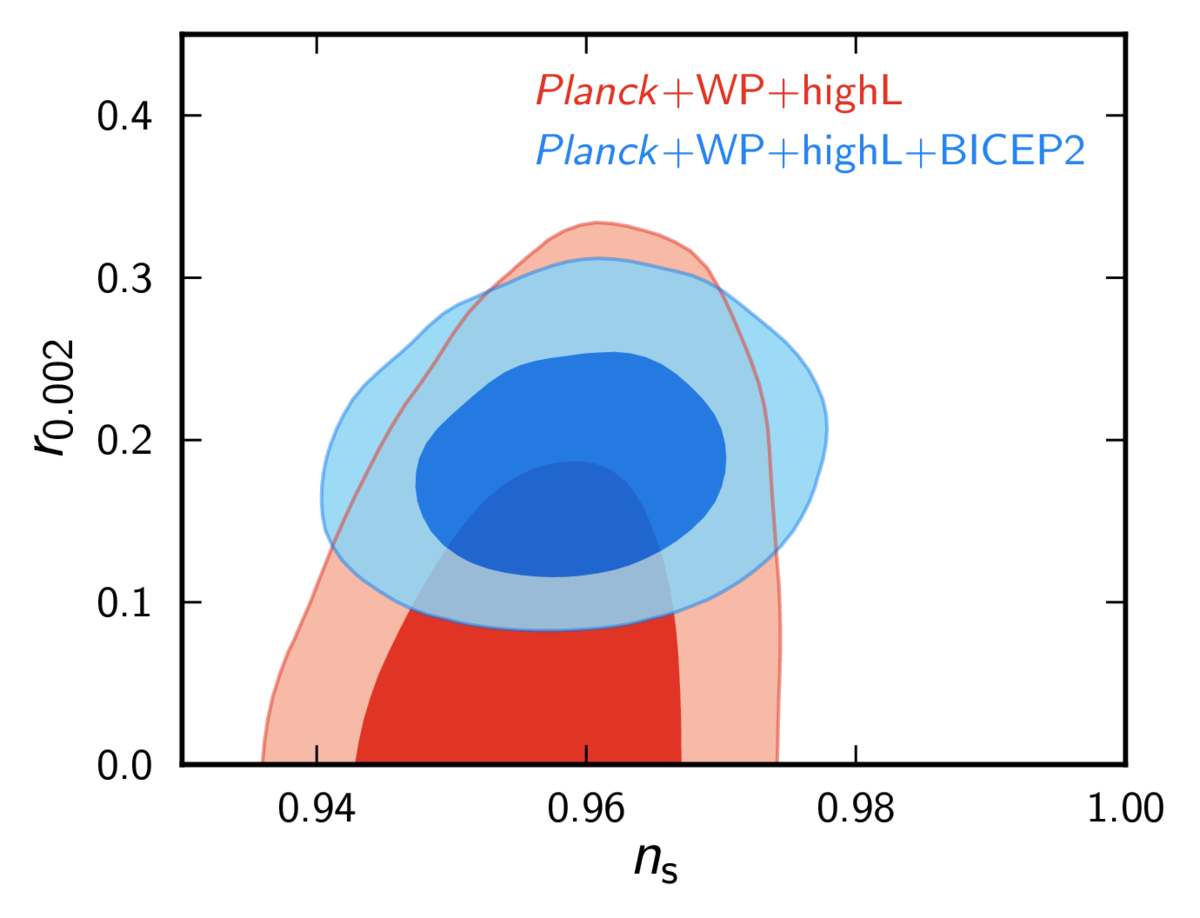BICEP2 and the primordial B-modes
Posted by David Zaslavsky on — Edited — CommentsYesterday the BICEP2 experiment (Wikipedia page) announced a result that physicists and astronomers around the world had been positively drooling over for two days: the detection of primordial B-modes in the cosmic microwave background.
Ordinarily I would write a whole blog post going through the BICEP2 paper: what the experiment is, what they’re looking for in the cosmic microwave background, what exactly they found, and why you should be excited about it too, but right now I’m super-busy with other things (including another blog post slated for later this week). So instead I leave you with this collection of links to peruse:
Background info:
- Sean Carroll’s detailed background on B-modes
- Matt Strassler’s cosmology primer
- Peter Coles’ brief overview
Reports of the results:
- Matt Strassler’s technical analysis
- Sean Carroll’s overview of results
- Ethan Siegel’s post with lots of pictures and details of the results
Popular articles:
There are many others, of course, but that should be enough to get you started. Also follow the #BICEP2 hashtag on Twitter.
I leave you with perhaps the most immediately interesting result to keep an eye on:

This figure, taken from the official BICEP results page linked above, represents one of the key numbers in the BICEP2 result, the tensor-scalar ratio \(r\) which basically represents the strength of primordial gravitational waves from inflation. (See e.g. Sean Carroll’s background post for more details) Before yesterday’s result, the best measurements we had of \(r\) — from the Planck and WMAP satellites, studies of baryon acoustic oscillations, and other assorted inputs — generally suggested \(r \lesssim 0.1\) or so, depending on which measurements you count. In particular they were all perfectly consistent with \(r = 0\), which would have implied no primordial gravitational waves. BICEP2 is the first experiment to exclude \(r=0\) (look back to my statistics post to know what it means to exclude a value), and at the very high significance of \(7\sigma\)! They measured \(r = 0.2\), which is quite large, and in fact kind of conflicts with the earlier measurements. So cosmologists will be looking very closely at future data releases from Planck and other experiments to see where this value settles down.